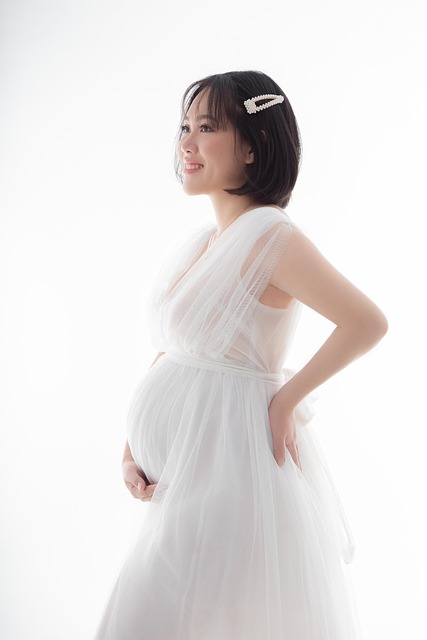As my 3-year-old son navigates the joys of potty training, he has taken to wandering around our home in the nude—clothes are clearly not his thing. Amidst his playful antics of using the potty, washing his superhero Legos, and earning stickers for his potty chart, he has begun to explore his body and pose a myriad of questions.
“Mommy,” he inquires innocently, “when will I get a vagina?”
Some of his questions elicit laughter, like the one above, while others are more straightforward, such as inquiries about his scrotum, the origin of poop, and why his father has hair around his genitals. While it’s easy for some parents to feel awkward, I see each of these moments as an opportunity to educate him about his anatomy.
I respond honestly and thoughtfully, aiming for clarity that suits his developmental stage:
- No, you won’t develop a vagina. Boys have penises, and girls have vaginas.
- Your poop comes from the small opening at the back.
- Daddy has hair there because that’s part of growing up as a man.
- Your scrotum is the pouch that contains your testicles.
Like many children his age, his curiosity doesn’t stop there. He asks about the function of testicles, prompting me to revisit our prior conversation about reproduction.
“Remember when I explained that a little piece of mommy and a little piece of daddy combine to create you? Well, your testicles are where the little pieces from daddy are formed, but that will happen later when you grow up.”
Some concepts are more difficult to articulate, but I strive to explain them in an age-appropriate manner. We’ve incorporated several illustrated books into our discussions—some specifically designed for children and others more general about reproduction. His fascination grows each night as he requests more stories, especially the illustrations showing sperm and eggs, and how cells multiply and divide to create a fetus.
I view this ongoing dialogue as planting seeds of knowledge. The “sex talk” is not a conversation I want to reserve for a single awkward moment in the future; rather, I aim for my children to have a foundational understanding of their bodies and sexuality that we can elaborate on as they mature. I want to eliminate any sense of secrecy or taboo surrounding these topics.
I initiate these discussions as soon as they start showing interest—typically around the age of two for both of my sons. They naturally inquire about their origins, the names and functions of their “private parts,” and the mechanics of reproduction. I don’t gloss over essential details or shy away from critical topics; I present the information straightforwardly and age-appropriately.
It’s easier than many might anticipate. Children can absorb a surprising amount of information, and if we communicate it simply and calmly, they will view it as just another part of learning, like understanding how flowers blossom or how to bake cookies. The discomfort often lies with adults, not the children.
Here are additional reasons for starting these conversations early:
- I want to instill respect for their own bodies and promote body positivity from a young age.
- I aim to cultivate respect for the bodies of future partners.
- I want them to feel safe reporting any inappropriate behavior to me, understanding that there is nothing shameful about such discussions.
- I prefer they receive their information about sex from me and my husband rather than from peers, media, or the internet, which could lead to misinformation and negative perceptions.
- I want them to know they can come to me with questions as they grow older. While it’s natural for teens to discuss such topics with friends, I want them to feel comfortable seeking guidance from me when needed.
By now, my 9-year-old has developed a fundamental understanding of bodies, reproduction, and even menstruation. While there may still be complexities he doesn’t fully grasp, our conversations will continue to evolve as he approaches adolescence.
When I mentioned to him that I was writing an article on early discussions about sex, I asked him to share his thoughts on our approach.
The benefits? “It makes me smarter,” he said.
The drawbacks? “It might be gross.”
“That’s reasonable,” I replied. I then inquired if he genuinely found the subject of sex to be gross.
“Nope,” he responded.
This exchange reinforces my belief that understanding our bodies, including their most intimate aspects, should not be perceived as shameful. It’s perfectly normal and natural. As for my 3-year-old, he may still not fully comprehend that his penis won’t transform into a vagina in the future, but we are working on clarifying that concept. I’ll also do my best to suppress my laughter the next time he asks if I have a hidden penis somewhere.
For those interested in exploring fertility options, check out this informative article on home insemination kits, as well as couples’ fertility journeys for intracervical insemination. And for a comprehensive resource on intrauterine insemination, visit Resolve.org.
In summary, starting conversations about sexuality early on fosters knowledge, respect, and open communication. By addressing these topics candidly, we can help children navigate their understanding of their bodies in a healthy, positive way.
Keyphrase: early sex education with children
Tags: [“home insemination kit” “home insemination syringe” “self insemination”]
